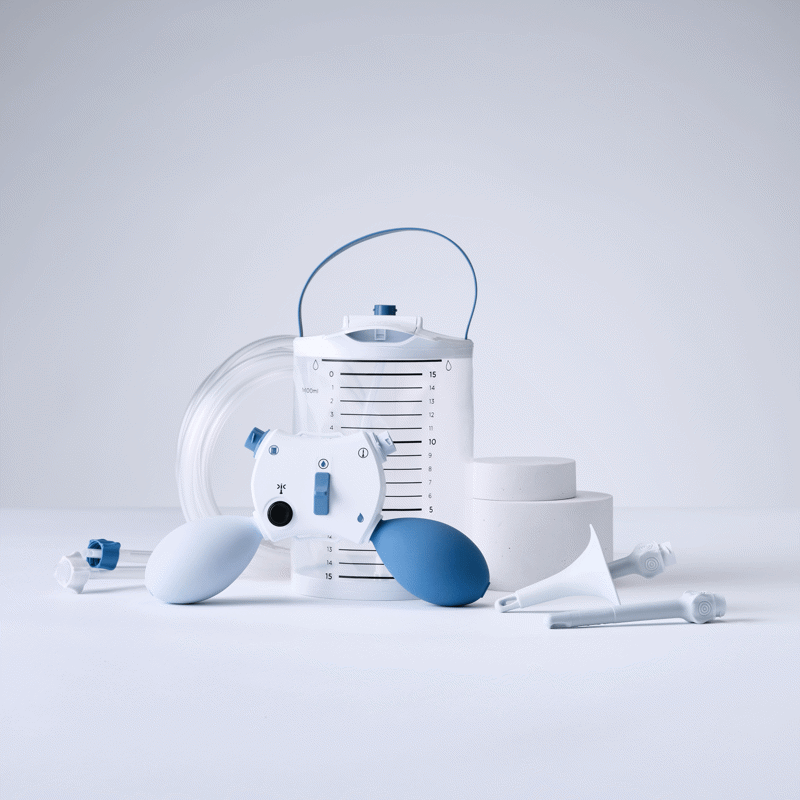
Helpful Tips and Tricks
People who practice bowel irrigation are usually rather relieved once they have discovered a system that works for them and helps them regain control of their lives. Many write to us with stories of their own experiences and want to share tips and tricks that may support others with similar issues.
Tips and Tricks From a Bowel Irrigation User
Kent Reverdal, who has a spinal cord injury, has been managing his bowel dysfunction using a bowel irrigation system for many years. Here, he shares his experience, some tips, and makes a case for why he recommends irrigation to manage bowel problems.*
Why use Bowel Irrigation?
- Dignity
- Control
- Time efficiency
- Fewer UTIs
- Less use of medicines
Kent's Tips and Tricks
Tip One: Patience
First of all, the bowel is probably the part of the body that takes the longest time to adjust to a new situation. Be patient. Create routines. Make sure to drink enough water. When in a warmer climate you really need to pay attention to your drinking and drink much more water than usual to avoid getting constipated. Having a fairly healthy diet is also recommended. It helps your bowel and makes you feel better as well.
Tip Two: Evaluate and Re-learn
Over the years you may need to adjust how to perform your regime. Perhaps using TAI every third day instead of every second. Bodies change over time and the better you get at knowing and listening to your body, the more you can optimize your routine.
Some users are told to empty their bowels in the mornings. That does not necessarily work for everyone, and you may have to find your own ideal time when you don’t feel stressed.
Tip Three: Amount of Water
To some people, about 500-600 ml is a good amount, whereas others use both more and less. Bowel treatment is no science – so do your own thing, your own way. For instance, many people put water containers on the floor. There’s nothing wrong with that, but you will need increased pressure to pump the water into your bowel. Others put a towel on the seat of the wheelchair and put the container there. This means less pressure is needed to pump the water. If you don’t use a wheelchair, you can use an ordinary chair or the sink instead.
Tip Four: Holding the Catheter
One of the most common misunderstandings, even among professionals, is that the regime will not work for you if you need to hold onto the catheter to prevent it from coming out. That’s just incorrect. Most people with a spinal cord injury (SCI), have no control over the sphincter muscle. Some even see it as an advantage to hold onto the catheter and be able to adjust the procedure. When filling up water, the water needs to pass through the stool and irrigate the bowel. Sometimes it takes time for the bowel to expand so the water can pass. When that happens, I feel an increased pressure on the balloon. Then I know I need to stop filling and wait, maybe even massage my stomach to help the procedure. When I feel that the pressure decreases, I can resume the process of adding water.
Tip Five: Time Consumption
Many ask questions about how long everything takes. My normal routine is as follows:
- First I empty my bladder as it otherwise will affect the transanal irrigation.
- After that, I insert the catheter and fill the bowel with water, which takes 3-5 min.
- I take out the catheter and wait about 15-20 min.
- Then the emptying takes 5-15 minutes.
- In my own routine, I always take a shower afterward. It makes me feel clean and it minimizes the bacteria in that area, something I’m sure has a positive effect on reducing the risk of UTI. I wish we could all pay more attention to bowel treatment and its effect on UTIs.
Tip Six: Using Gloves and Your Hand
I have seen instruction videos that show how easy it is for the stool to pass after irrigation. But it does not always work that easily for me. I normally need to use a gloved finger up my butt to help the sphincter relax so the stool can pass. It also seems to trigger the reflexes, so it helps a lot. If the bowel does not start by itself, try to massage the stomach downwards. Lean forward if possible. Normally these things combined will do the trick.
*Kent's tips are based on his experiences and should not be considered medical advice, for medical advice always consult a healthcare professional
Children and Bowel Irrigation
How does bowel irrigation for children work? Here we explore how and when to introduce TAI for children.

User Stories - Bowel
Here our users share their stories on how they live and cope with bowel issues.

Getting Started with Bowel Irrigation
About to start bowel irrigation? Here we share advice on how to start your journey.

Navina Bowel Care
-
Navina Smart
key:global.content-type: Product
Navina Smart has software-controlled pumps that inflate a balloon and instill water into the bowel. Pushing the buttons allows for total control over the procedure.
Request information
-
Navina Classic
key:global.content-type: Product
Navina Classic is the user-friendly choice if you prefer to control the procedure with a manual hand control unit.
Request information